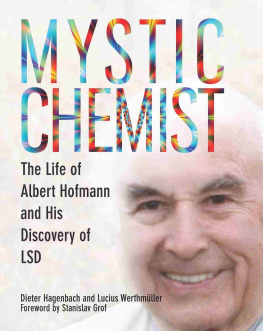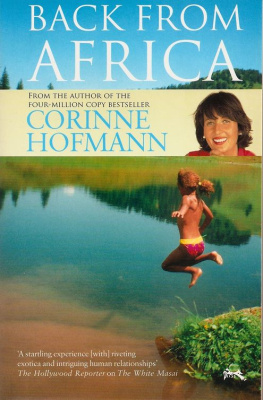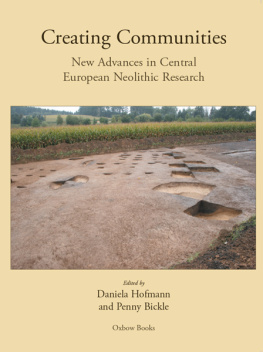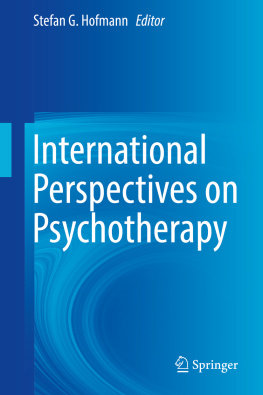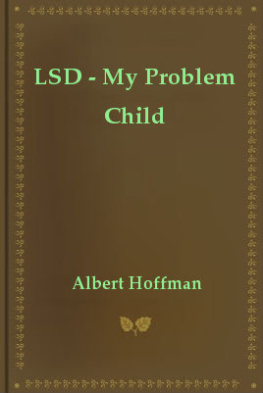


The Life of
Albert Hofmann
and His Discovery of LSD
Dieter Hagenbach and Lucius Werthmller
Foreword by Stanislav Grof

Copyright 2011 by AT Verlag Aarau und Mnchen
Text Copyright 2011 Dieter Hagenbach and Lucius Werthmller
English translation copyright 2013 by Synergetic Press
Foreword copyright 2011 by Stanislav Grof
All rights reserved.
No part of this publication may be reproduced, stored in any retrieval system, or transmitted, in any form or by any means, electronic, mechanical, photocopying, recording, or otherwise without the prior permission of the publisher.
Published by Synergetic Press
1 Bluebird Court, Santa Fe, NM 87508
Library of Congress Cataloging-in-Publication Data from the print edition
Hagenbach, Dieter A.
[Albert Hofmann und sein LSD. English]
Mystic chemist : the life of Albert Hofmann and his discovery of LSD /
Dieter Hagenbach and Lucius Werthmller ; foreword by Stanislav Grof.
pages cm
Translation of: Albert Hofmann und sein LSD.
Includes bibliographical references and index.
ISBN-13: 978-0-907791-46-1 (hardcover)
ISBN-13: 978-0-907791-44-7 (pbk.)
ISBN-10: 0-907791-44-1
1. Hofmann, Albert, 1906-2008. 2. LSD (Drug)--History. 3.
Chemists--Biography. I. Werthmller, Lucius, 1958- II. Title.
BF209.L9H34 2013
615.7883092--dc23
[B]
2013003308
Editor: Linda Sperling
Translation: William Geuss and Linda Sperling
Interior book design: John Cole Graphic Design
Cover design: Lakshmi Narayan, Awake Media
Cover photo: Franois Lagarde
Cover artwork: Richard Toelanie
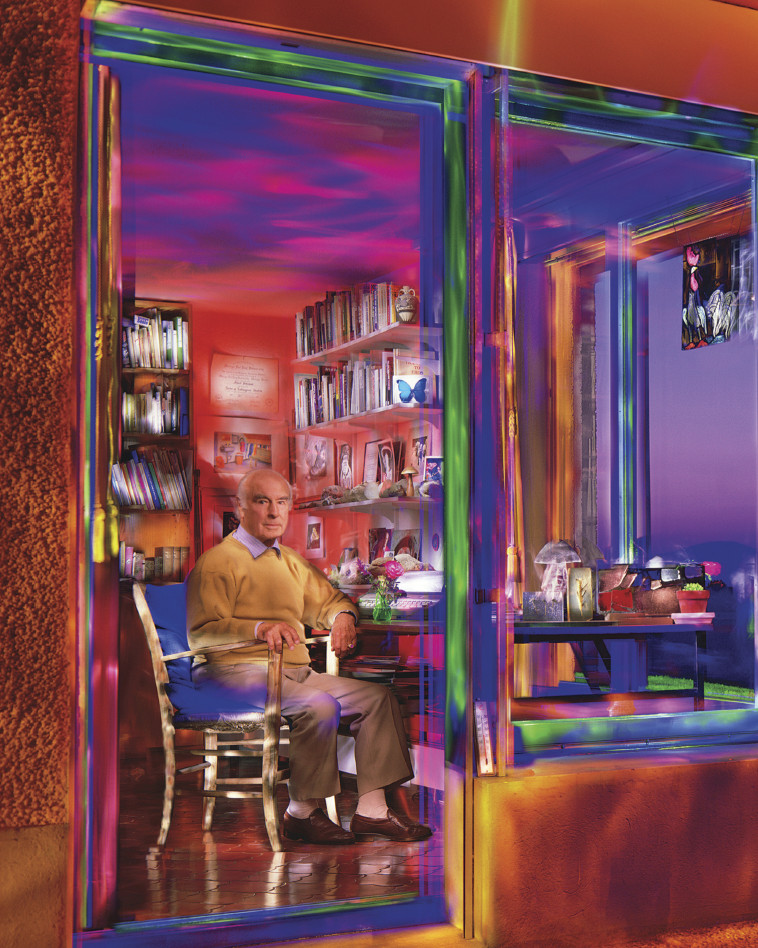
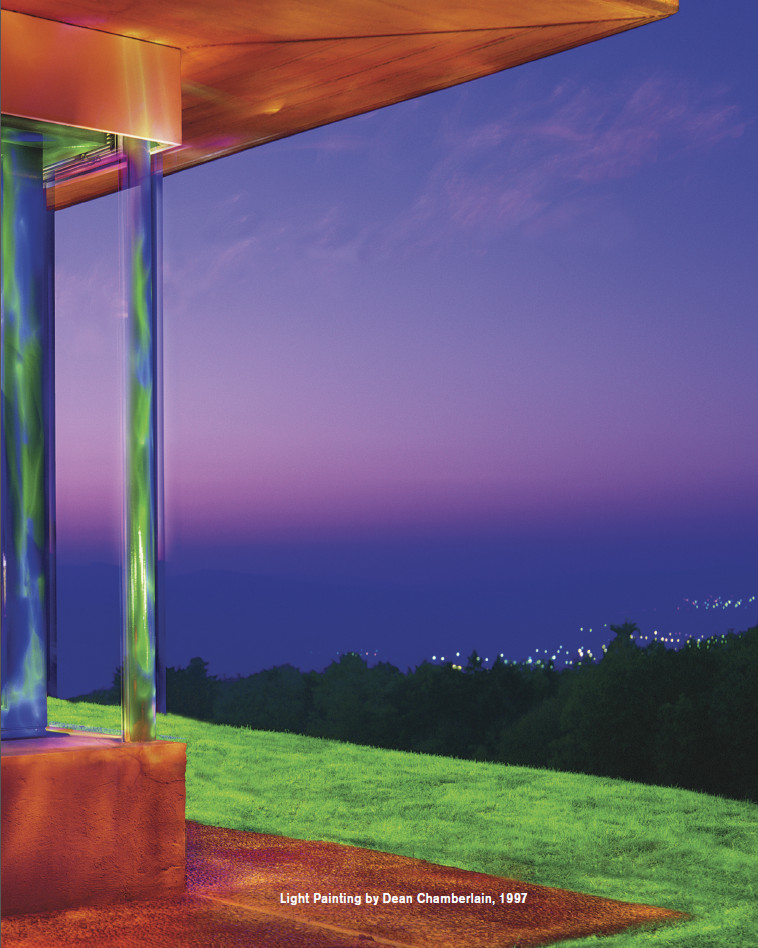
Introduction
This book is dedicated to all whose lives were changed by Albert Hofmanns discoveries.
Not I, LSD was chosen succinctly said Albert Hofmann in 2007 when, at the age of 101, he was selected as the most important living genius by a jury from the renowned British newspaper the Daily Telegraph. Hardly any other discovery in the twentieth century has exercised greater influence on science, society, and culture than the mysterious, incomparably potent substance that in doses of a mere millionth of a gram profoundly alters consciousness. The chemist discovered its psychedelic effect on April 19, 1943, during a self-experiment on his legendary bicycle ride. This first LSD trip fundamentally changed his life as it later would lead millions of people throughout the world into new directions.
Albert Hofmanns biography takes us on a journey through the twentieth century: From his mystical experiences of nature as a child in Baden, to his study of chemistry with Nobel Prize winner Paul Karrer in Zurich, his discovery of LSD and of psilocybin at Sandoz in Basel, his adventurous expeditions and journeys and the many years of retirement devoted to natural philosophy and an extremely rich social life.
His research into ergot alkaloids led to several drugs that he developed virtually by himself and these earned and continue to earn his former employer billions in sales. Even though Albert Hofmann never earned the Nobel Prize due to the controversy surrounding LSD, he is the best known twentieth-century chemist and the only one with pop star statusas the storm of flashbulbs at his frenetically celebrated appearances on his 100th birthday at the LSD Symposium in Basel clearly demonstrated.
After its fateful discovery, LSD became the subject of thousands of clinical studies for decades as well as obscure experiments by Secret Services and the Military. In the 1960s it left the laboratory and fueled the emerging youth and Hippie movements in the USA that ultimately changed the worlda mass phenomenon that unleashed downright hysteria about LSD, which was described as the devils work. The creativity-enhancing effect of this psychedelic substance influenced the development of computer technology just as significantly as it led to pioneering scientific discoveries and a holistic relationship of humans to their environment.
Albert Hofmann remained linked to this molecule for the rest of his life, which prepared the ground for innovative therapy approaches and a new estimation of mystic states, and brought him into contact with such thinkers as Aldous Huxley, Ernst Jnger and Karl Kernyi, as well as countless scientists, artists and counter-culture proponents. He never lost faith in his problem child to which he attested the potential of a wonder drug, and he was pleased when he had the experience in his later years of LSD once more gaining acceptance. The Swiss Federal president of the time, Moritz Leuenberger wrote, Through your research and writings, Dr. Hofmann, you have helped keep artistic, philosophical and religious questions alive in scientific discussions, as he congratulated him on his 100th birthday.
Albert Hofmannan extraordinary person, researcher and mystic, maintained his openness, curiosity and love of the living creation up to his last breath at the age of 102.
Dieter Hagenbach and
Lucius Werthmller
Foreword by Stanislav Grof
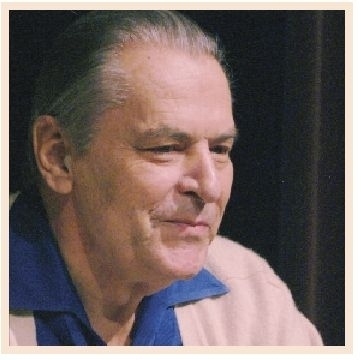
Stanislav Grof, Basel 2008
It is an extraordinary privilege and pleasure for me to write a foreword for this book honoring the life and work of Albert Hofmann, a brilliant researcher and scientist whom I consider my spiritual father. Words can hardly describe my deep gratitude for everything that his discoveries brought into my personal and professional life and into the lives of countless other people, who used the substances he had synthesized responsibly and with the respect that these extraordinary tools deserve.
I first heard Alberts name in 1954 when I worked as a medical student volunteer at the Psychiatric Department of the School of Medicine of Charles University in Prague. My preceptor, Docent George Roubiek, had a good working relationship with Sandoz Pharmaceutical Company in Basel and regularly received complimentary samples of new Sandoz products as they were brought to market. As part of this cooperation, he received a supply of diethylamide of lysergic acid, or LSD-25, a new experimental substance with unprecedented psychoactive power. The package arrived with a letter describing the discovery of LSDAlberts accidental intoxication during the synthesis of this substance, his subsequent self-experiment, and Werner Stolls pilot study with a group of normal volunteers and psychiatric patients.
Werner Stolls paper LSD, ein Phantastikum aus der Mutterkorngruppe (Stoll 1947) became an overnight sensation in the scientific world. His pilot study showed that miniscule dosages of this new substance (in the range of millionths of a gram micrograms or gammas) were able to induce a state in experimental subjects that in many ways resembled naturally occurring psychoses; Stoll also mentioned in his paper that LSD might have interesting therapeutic potential. Sandoz was now sending samples of the new substance to psychiatric research institutes, university departments, and individual therapists asking them if they would be interested in experimenting with LSD and exploring if this substance had any legitimate uses in psychiatry and psychology. The letter gave two suggestions for possible use of LSD: As an agent inducing experimental psychosis that might provide insights into biochemical causes of schizophrenia and as an unconventional therapeutic tool that would make it possible for mental health professionals to spend a few hours in a state resembling the experiential world of psychotic patients.
Next page
